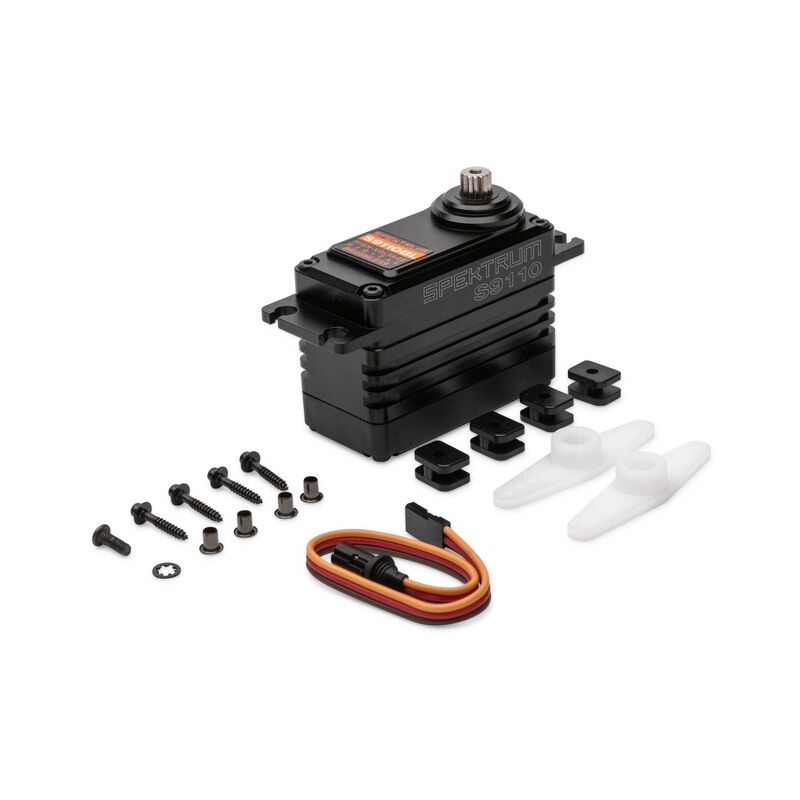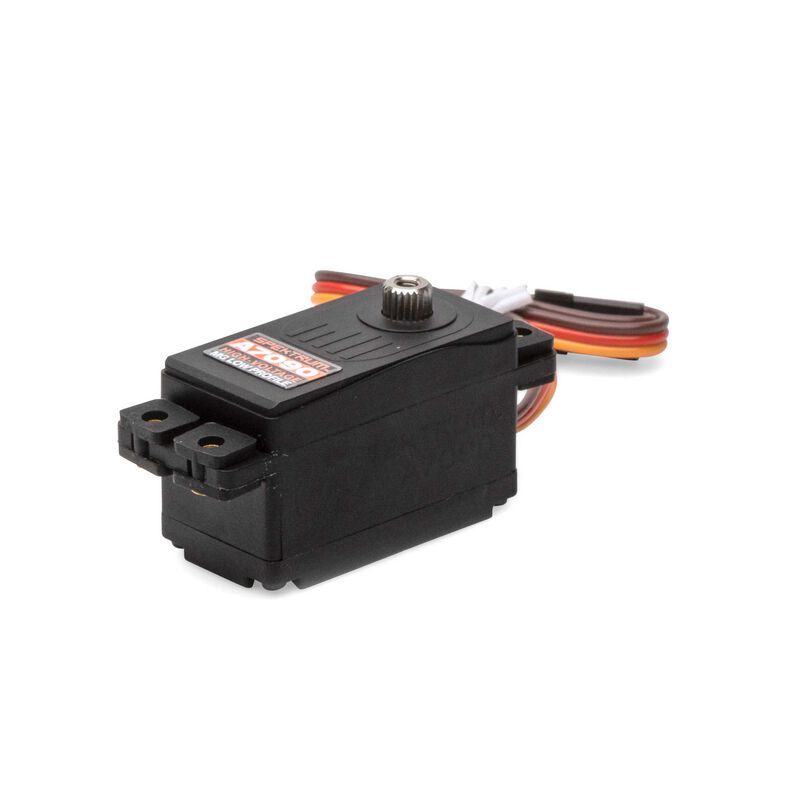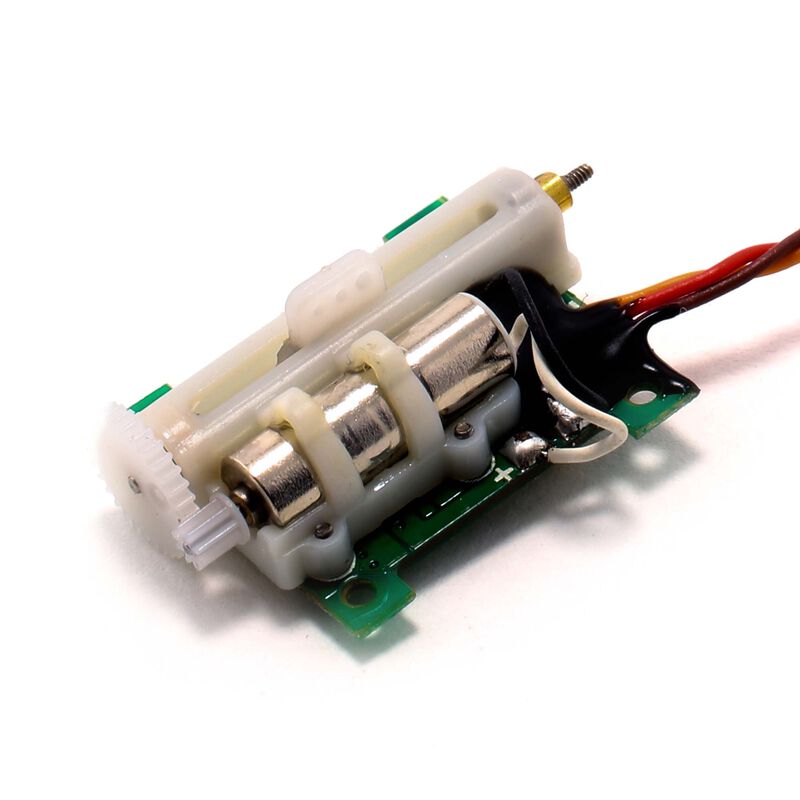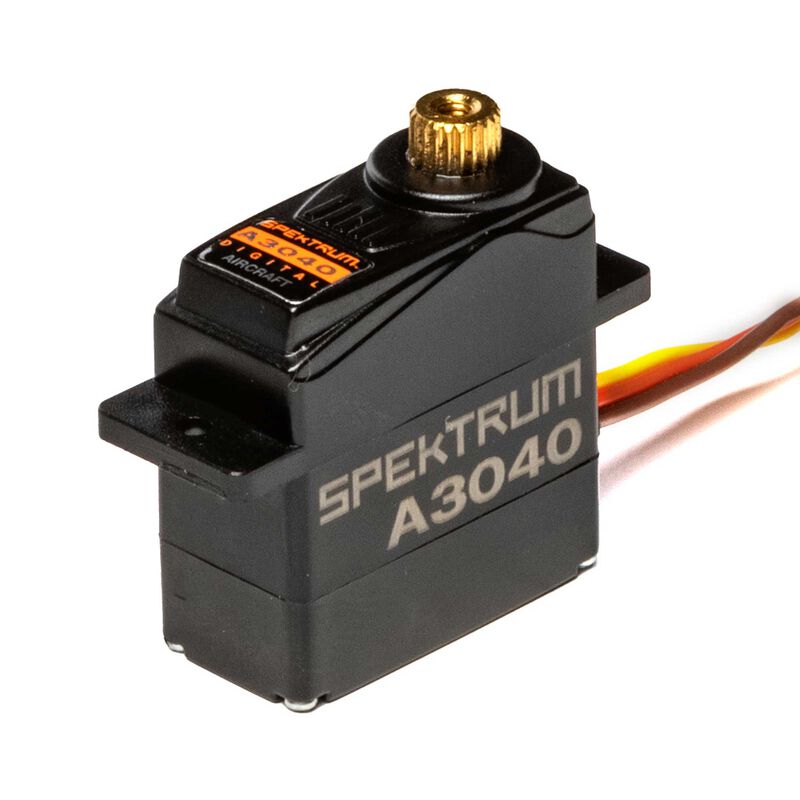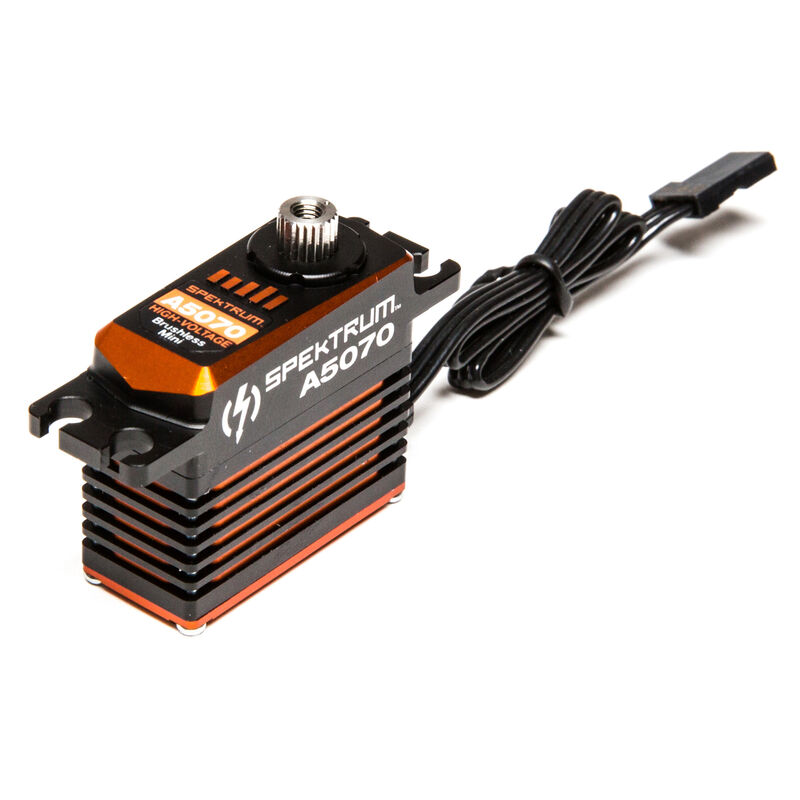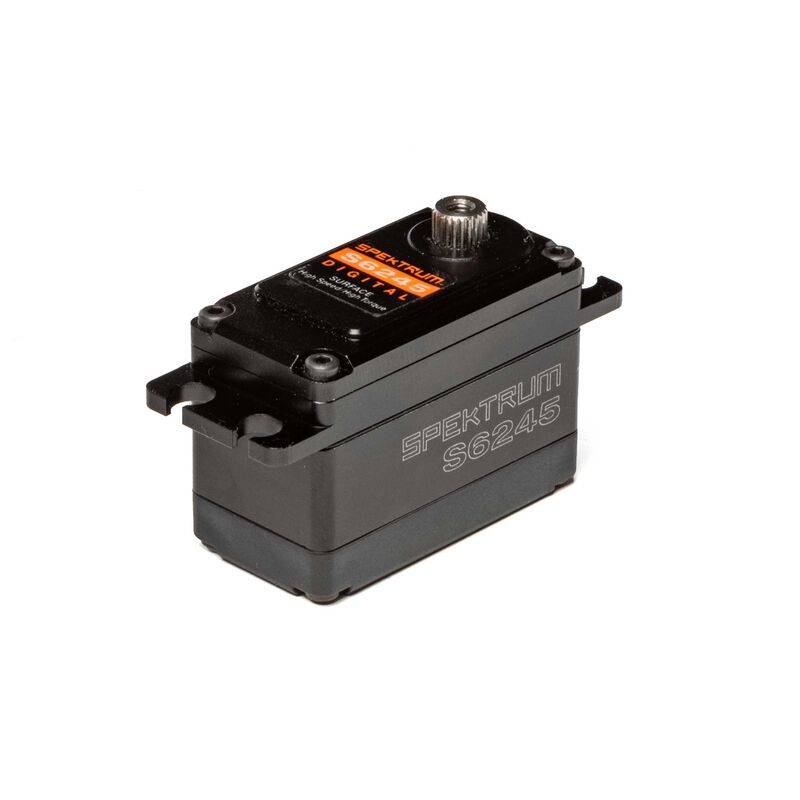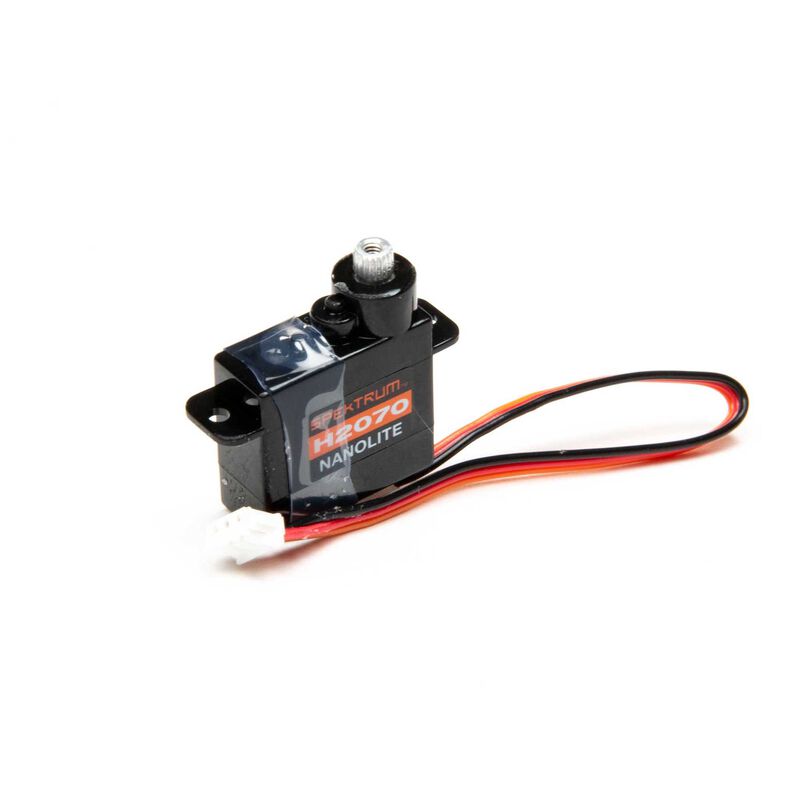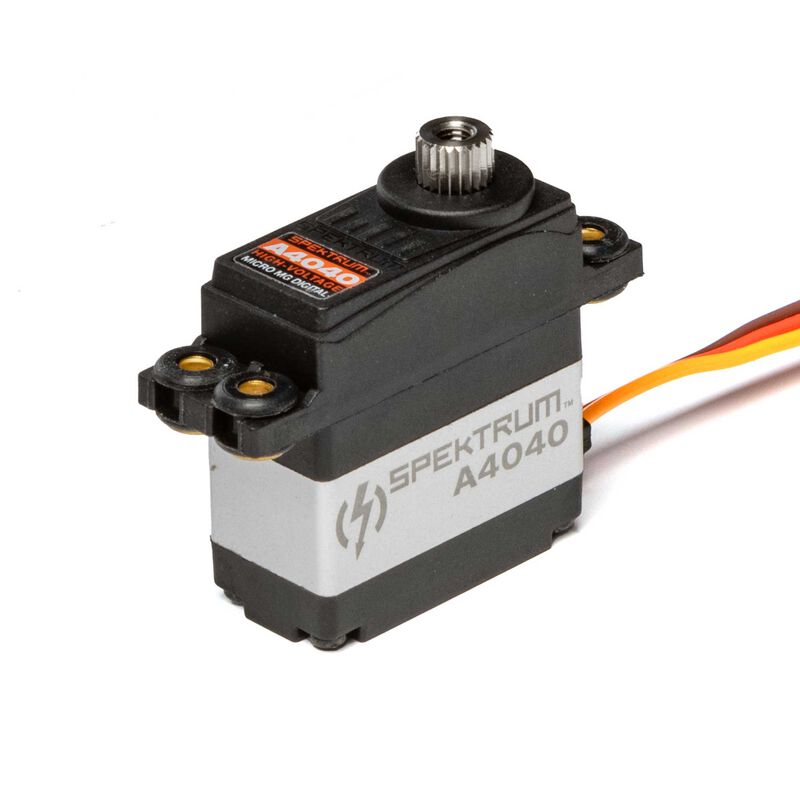Posted: 10/24/22
Spektrum Servo Designation Guide
The label and name are a great indicator of a servo’s intended purpose and size. For example, the “A” in the Spektrum A5070 (seen here) indicates that it is designed for aircraft use.
A = Air Servo
H = Heli Servo
S = Surface Servo
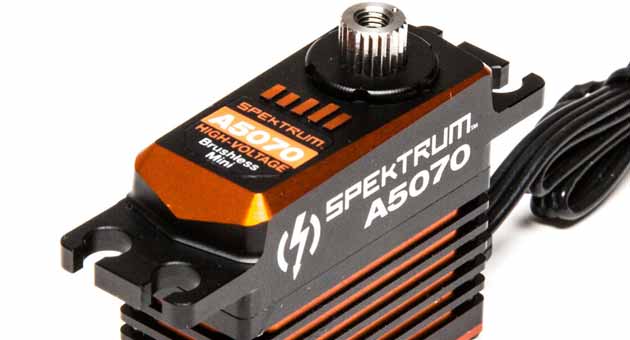
Air, Heli, and Surface RC servos are designed for those specific needs.
Heli servos are generally faster with lower torque and a narrower deadband. Airplane servos generally have better holding power when deflected with a wide variety of sizes, torque and speed specifications. And Surface steering servos are traditionally designed to be more durable for bashing and racing but also have a wide variety of sizes and applications to accommodate all types of surface models. Also, many Spektrum Surface Servos feature gaskets and coatings that protect from the elements, such as water, dirt, and dust. Users are welcome to experiment and mix RC servos between model variants to better fit their needs and in many situations will find a servo from one category that works excellently for a particular application that reaches beyond its intended application.
The second digit in the name indicates the size category of the RC servo. In general, it is smallest to largest, starting with 2 – 9.
“2” indicates Ultra-Micro and Nanolite Class servos. Such as the A2030L Long Throw Linear Servo and the H2070 Nanolite Heli Cyclic Servo. These types of RC servos are generally used for very small models that are light weight and do not require large amounts of torque.
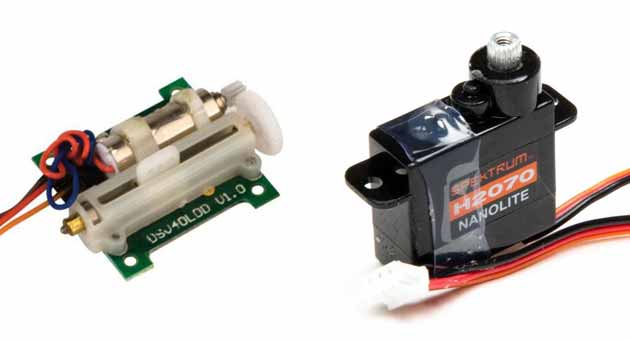
“3” indicates Sub-Micro Class RC servos. Such as the A3040 Digital High Torque Metal Gear Servo and A330 Analog 9g Servo. These servos meet a wide range of needs for smaller aircraft models and are very popular for small-scale scratch built models, 1/18 scale trucks and buggies and 3D Profile Foamies.
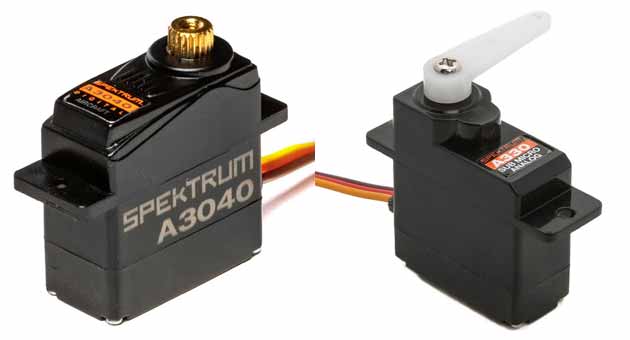
“4” indicates Micro Class RC Servos. Such as the A4040 Digital HV Metal Gear Servo and A460 23g Analog Metal Gear Servo. These servos are popular for aircraft models needing a lightweight but powerful servo in a compact package, such as larger foam models or extra features such as retract doors and actuators.
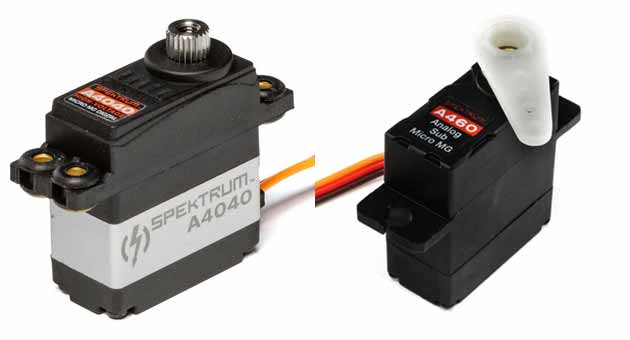
“5” indicates Mini Class RC Servos. Such as the A5070 Digital HV Brushless Servo and A5080 Digital High-Speed Servo. These servos are popular in high powered 60 size 3D Aerobatic Models, smaller EDF and Turbine Jets, Sport class pylon and pattern planes, as well as 1/12 Scale Carpet and Drift Racing Models.
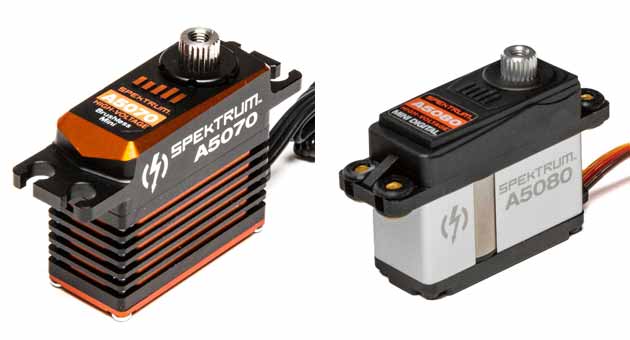
“6” indicates Standard Class RC Servos. Standard is a likely the most “standardized” size across the industry, but it can feature low profile cases for a short servo. Examples for these servos are the A6300 High-Speed High-Torque Brushless Servo and the S6245 Low Profile Race Servo. This size servo is used in the majority of RC applications from RC Monster Trucks to Giant Scale Warbirds.
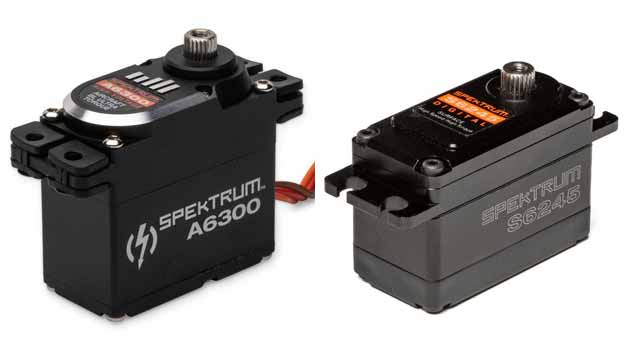
“7” indicates a Specialized Class RC Servo. These servos are normally something designed for a specific task. Examples of these servos are the A7090 HV Brushless Low Profile Servo and the A7100 HV Thin Wing Servo. Retract servos are normally used in Scale Civilian and Warbird aircraft models and Thin Wing servos are specifically used in Sail Plane and Glider models because those tend to have a very thin wing and airfoil.
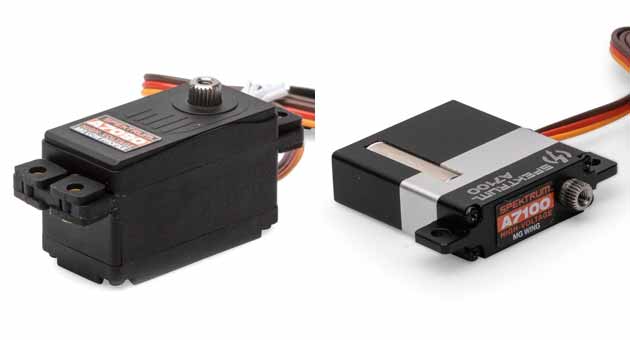
“9”Indicates Giant Class RC Servos. Such as the S904 1/6 scale Digital Servo and the S9110BL Brushless 1/5 Scale Servo. These servos are commonly used in giant scale 1/6 or larger RC Trucks and RC Buggy models that require an abundance of power for the heavy components and abuse this size of models exhibit. Spektrum does not currently offer a Giant Scale Aircraft Servo, but there are some offered by other manufactures for use in aircraft models that are 1/3rd scale or even larger. One thing to note about Giant Class Servos is that the output spline are larger than your micro to standard size splines and have a 15 tooth output spline that is commonly used in the Giant Scale Class.
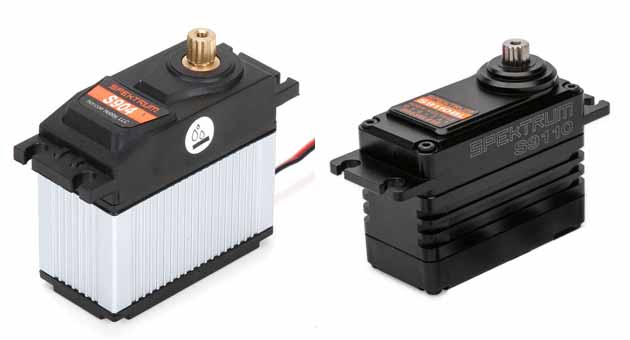
Lastly, the last digits beyond the First letter and First Number are simply indicators in their arrival to the portfolio.
Meaning that the A6300 servo was released before the A6310. This does not necessarily mean that one is worse or better than the other, but that it was added to the portfolio to fill a price and performance gap for that class and size of servo.
Also, in some cases there is a letter or two at the end of the servo name that helps designate a important feature or spec. Here are some examples…
- BL (Example SPMSS9120BL) = Brushless
- HV (example SPMS904HV) = High Voltage
- R (example SPMSA330R) = Reverse direction (when compared to original sku)
- T (example SPMSH2070T) = Tail servo for a helicopter model
- L (example SPMSH2040L) = Long throw servo (commonly used with linear servos)
Thank you for taking the time to read and learn more about how we at Spektrum name and designate or RC servos and their applications. We hope this Article has been helpful, if so please share with your fellow RC enthusiasts.
Best Regards,
Tom Cogswell, fellow RC Enthusiast and Marketing Coordinator at Spektrum RC

